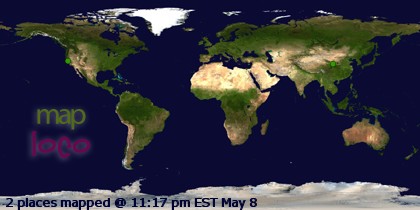So while images of elaborate salt carvings and deep mine shafts are what most people think of when they picture a salt mine, that's only one of many methods to extract salt from the earth (rock salt, or halite) and doesn't account for Solar salt (sea salt) or Evaporated salt (refined salt). The evaporated salt, can be just about anywhere, and if you don't see large piles of white salt, you'd never know it.
Take for instance, the Morton salt facility in Glendale.
 Those white pipes that are going into the ground, are not part of some natural gas pipe line. No, they're pumping fresh water (yeah, in the Arizona Desert) down into the ground, and pulling brine laden solution back up to the surface. Then they do some conditioning (might be membrane separation or something, I don't know) and pump the remaining briny solution into LARGE open pits where the unrelenting Sonoran sun quickly evaporates the water away, leaving salt behind, that they scoop up.
Those white pipes that are going into the ground, are not part of some natural gas pipe line. No, they're pumping fresh water (yeah, in the Arizona Desert) down into the ground, and pulling brine laden solution back up to the surface. Then they do some conditioning (might be membrane separation or something, I don't know) and pump the remaining briny solution into LARGE open pits where the unrelenting Sonoran sun quickly evaporates the water away, leaving salt behind, that they scoop up.I first noticed this technique when I was driving through the Western Dutch countryside, near Hengelo Netherlands. I saw these extensive networks of pipes, where the pipes were not irrigating the farm fields, but instead, were pumping water into the ground and returning brine solution back to a large industrial salt plant, where the water is evaporated away and the salt turned into products that European salt lovers desire.
Most of Phoenix, and all of Glendale, and Luke Air Force Base to the West of Glendale, sit on about 1500 feet of silt, deposited there with each of the 4 or 5 historic ocean floodings the valley has been through. And down inside that silt, is alot of salt. Some of it, concentrated, as you can see from the Salt Institute's handy map above.
Turns out that such large salt concentrations are all over the place. Nearly the entire lower peninsula of Michigan is sitting on a massive concentration of salt. Pakistan, Poland, The Netherlands, Pennsylvania, parts of China, also have massive salt concentrations. So while you thought that your city, town, or your own personal property is not being disturbed or drilled under, you're probably wrong. Between evaporated salt extraction, and natural gas fracking, it's increasingly likely that there's some industrial fluids being circulated beneath you, right now. And to make it more interesting, often times with salt domes, they're found adjacent to oil & gas deposits! Hooray for more fossil fuel production!! And... if your salt tastes a little oily or pungent, don't worry. It's probably just residual fracking fluid.
Yummy! From now on, I'll be using only sea salt in my food, and avoiding large scale industrial salt production who may, or may not, have their customers' health held in a higher priority than profits. The Salt of the Month Club my friend Zim mentions, is an awesome idea indeed.





Maybe one day we'll discover the motherlode: a huge pork-belly vein in texarkana. We'll put all this together and end up with bacon mines.
ReplyDelete